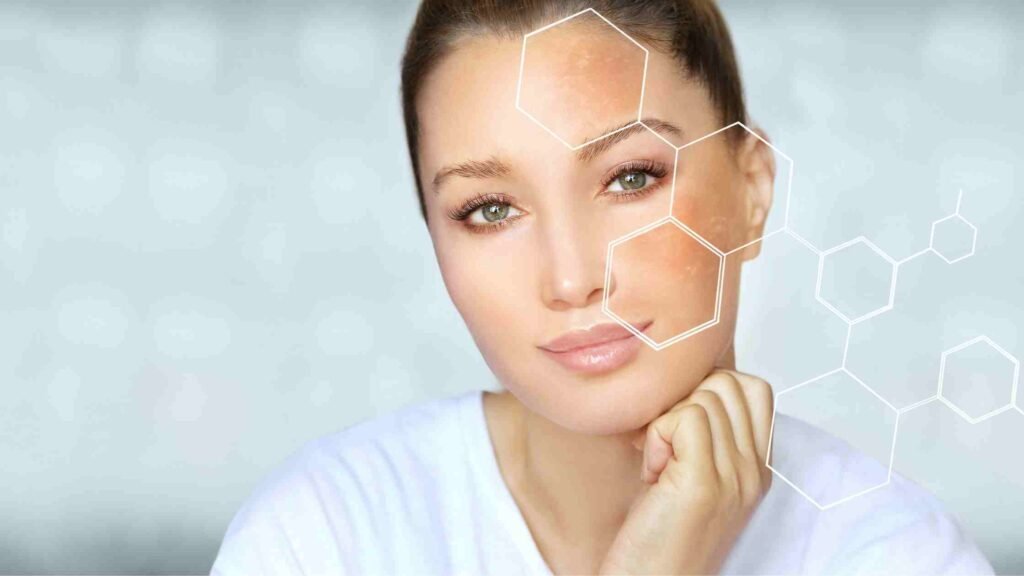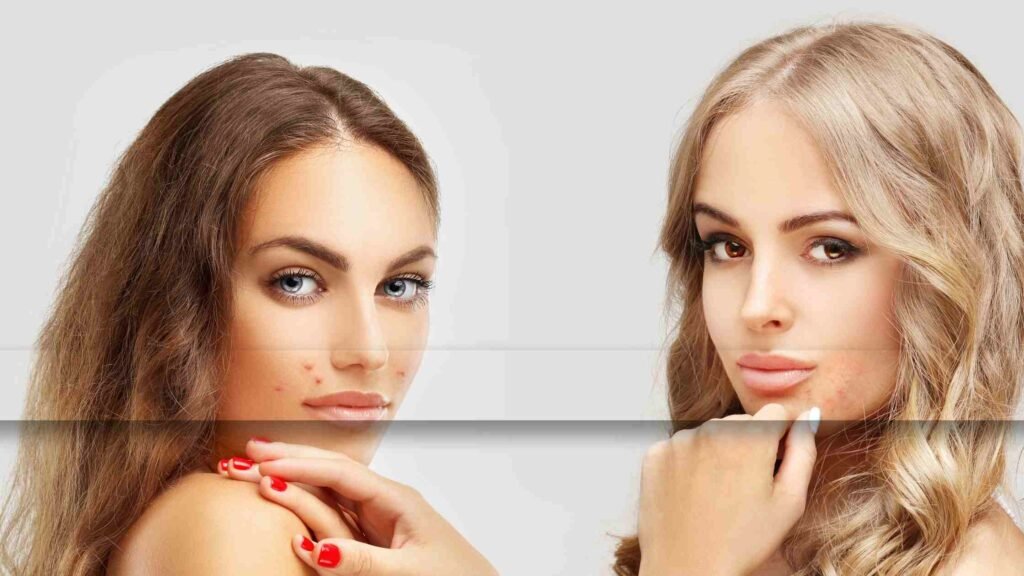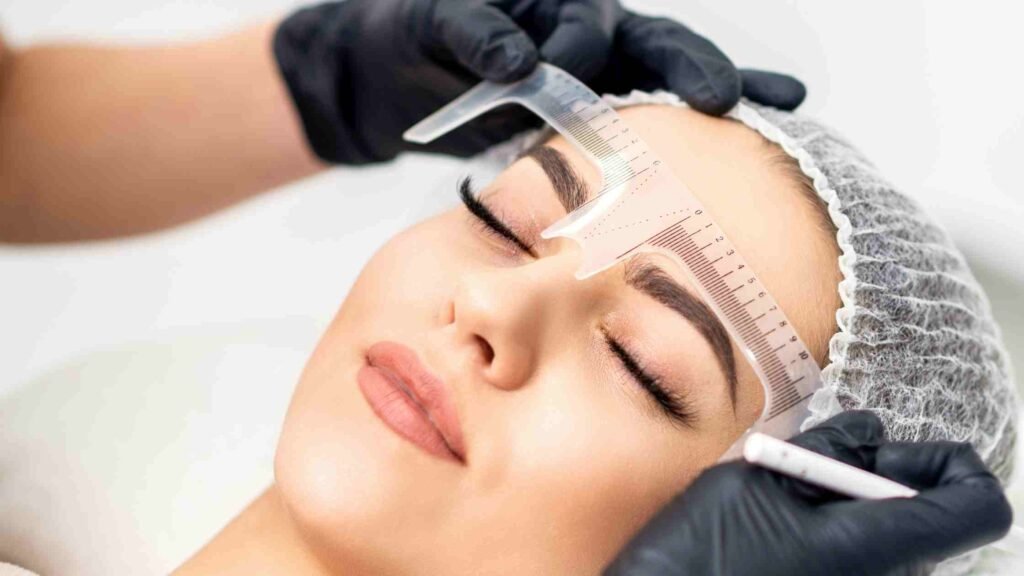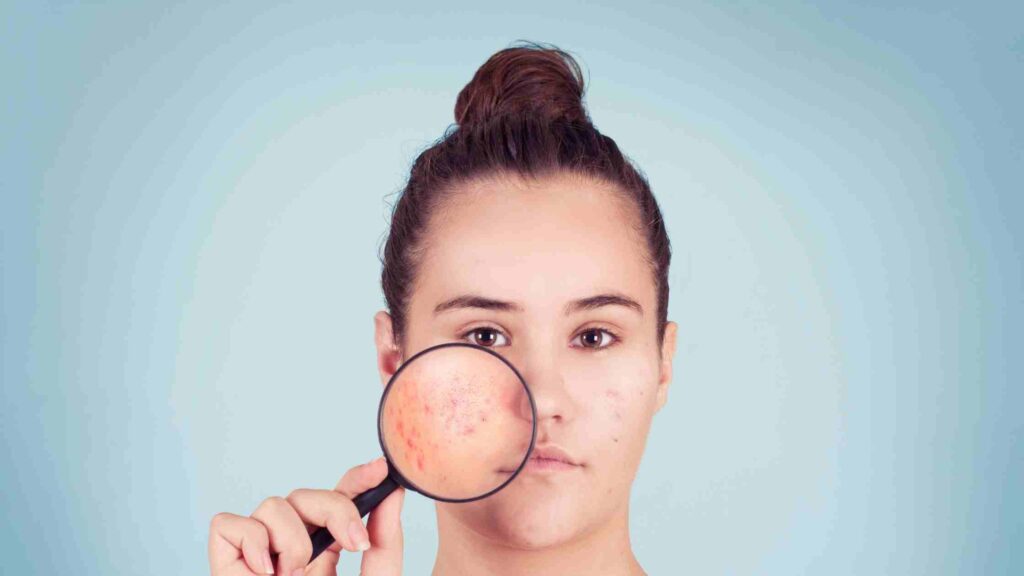Waking up with a prominent dark patch on the face is probably the worst nightmare for every person. However, skin pigmentation is a common skin complaint. Overexposure to the sun, growing age, hormonal imbalances, and other causes can be associated with skin pigmentation.
Skin pigmentation disorders don’t happen overnight. And it takes time for hyperpigmentation to form and become visible. When the skin pigmentation disorder affects your skin’s color, it becomes visible in some places.

Not necessarily; skin pigmentation always appears open on the face or in large patches. In many cases, the occurrence of small patches also has been noticed. Skin pigmentation is not a life-threatening or harmful disorder, but in many cases, skin pigmentation is associated with other medical conditions.
Therefore, whenever your skin becomes darker or lighter, it is better to talk to a dermatologist or skin care provider to reach the root cause of the problem and learn about the best possible treatment modalities to reverse the condition.
This article will discuss the types, causes, and treatment options of skin discoloration or skin pigmentation. Read this till the end and educate yourself about skin pigmentation.
What Is Skin Pigmentation?
Our skin gets color from a pigment named melanin. In our skin, there are special cells that make melanin. And when those cells become damaged or unhealthy, the melanin production gets affected, causing patches on the skin. In many cases, such discoloration has been noticed on the patient’s entire body. When the body overproduces melanin, the skin gets darker, and when the body produces too little melanin, the skin gets lighter.
Read more about What Is the Best Skin Whitening Treatment in India?
What Are Different Types Of Skin Pigmentation?
There are several types of skin pigmentation, and understanding all the types and causes of skin discoloration will help you to find the best possible treatment option to prevent and tackle those signs when they appear.
Hypopigmentation
When your skin produces a low amount of melanin, your skin may experience the occurrence of patches all over that are lighter in color than the surrounding skin. There are many causes behind hypopigmentation, including infections, chemical exposure, burns, injury, etc. After an injury, the scars that develop may appear lighter than the surrounding skin when our skin heals. However, some rare genetic conditions such as albinism, pityriasis alba, and vitiligo may also cause hypopigmentation over broad areas of the skin and sometimes the entire body.
Other possible causes of hypopigmentation involve tinea versicolor, psoriasis, eczema, and lichen sclerosis.
Hyperpigmentation
Hyperpigmentation is precisely the opposite of hypopigmentation. In hypopigmentation lower amount of melanin is produced, whereas, in hyperpigmentation, overproduction of melanin is involved. The condition is called hyperpigmentation, when your skin has uneven patches that are darker in color compared to the surrounding skin. These small dark patches are usually found on the face and hands in other areas that are frequently exposed to the sun.

Vitiligo
Vitiligo is a rare genetic skin condition caused when someone loses pigment in patches of skin. With time, those patches lose color, become paler and paler, and ultimately appear white with clearly visible borders. There are two types of vitiligo, including segmental and non-segmental. Segmental vitiligo generally affects one side or some areas of the body. The non-segmental vitiligo affects both sides of the body proportionally. Vitiligo occurs when the cells that produce melanin die or stop reducing melanin. Recently a study has found that stress contributes to vitiligo as stress affects the immune system causing the body to react differently and mistakenly destroy the melanocytes by releasing antibodies. However, other immunity disorders, physical trauma, and oxidative stress imbalance can be the other causes of vitiligo.
Read more about How Much Does Chemical Peeling Cost In India?
Albinism
Albinism is another genetic condition, and the cause of albinism is the mutation of specific genes that impact the melanin production of the body. People of all races can be affected by albinism, and it is not a disease, but a genetic condition people are born with. Albinism does not spread as it is not contagious, and there are different types of albinism depending upon the level of pigmentation.
- Oculocutaneous albinism is the most common type of albinism in which people are born with ashen skin, hair, and eyes. There are seven different subtypes of oculocutaneous albinism.
- The second type of albinism is ocular albinism, in which only a person’s eyes are affected. People with ocular albinism are generally born with blue eyes, and sometimes their Irish can be very pale, and their eyes appear red or pink.
- Hermansky Pudlak Syndrome is a type of albinism that is a form of oculocutaneous albinism with bruising issues, blood disorders, and kidney, bowel, and lung diseases.
- Last but not least Chediac Higashi Syndrome is a type of albinism that includes all the symptoms of oculocutaneous albinism with neurological and immune issues.

Melasma
Melasma is a skin problem that causes dark and discolored patches to appear on the skin. Melasma is also called the mask of pregnancy since this condition is quite common in pregnant women due to hormonal imbalances. When a person is affected by melasma, dark patches may appear all over the skin, especially the face, and sometimes they appear symmetrically with matching marks on both sides of the face. Melasma may also occur in different body areas exposed to the sun. Therefore some people also experience melasma on their necks and forearms. Melasma is not a harmful or life-threatening condition, but it may make a person self-conscious about their appearance.
Read more about How to reduce melanin?
Freckles
Freckles are skin conditions in which small brown spots appear on your skin, especially areas overexposed to the sun. Freckles come from ultraviolet radiation stimulation. However, freckles are also formed due to the overproduction of melanin. There are two types of freckles, including solar lentigines and ephelides. In the first type of freckles, dark patches appear on the skin, and mainly this skin condition occurs during adulthood. The second type of freckles is common; people mostly know them as freckles. Though both types of freckles are similar, their only difference is the way they develop.
Photo Melanosis
Photo melanosis is a common skin condition in which brown patches appear on the face, arms, hands, and sometimes the back. It is mainly caused by prolonged exposure to the sun or hormonal changes in the body. The symptoms of photo melanosis include the appearance of pigmentation on the forehead, face, nose, cheeks, and upper lips. Through a simple physical examination, the dermatologist can diagnose photo melanosis. Though the condition is not fully curable, we manage it completely. It is not dangerous and does not cause any severe problems like skin cancer. This condition is entirely a cosmetic issue but requires a doctor’s guidance.
Age Spots
Age spots are also liver spots that appear as flat, small, dark patches on the skin. The age spots may vary in size and usually appear in areas overexposed to the sun. Age spots have also called sunspots and solar lentigines. In adults over 50 years of age, age spots are prevalent, but younger people also can get them when they spend more time in the sun. Sometimes age spots look similar to cancerous growth. However, actual age spots do not require any treatment. Nevertheless, people can opt for treatment options for aesthetic reasons to lighten or remove the age spots.
Sunburn
Sunburn is caused by overexposure to ultraviolet flight. Ultraviolet light from the sun or artificial sources such as led lamps and tanning beds can penetrate the deep layers of the skin, causing skin damage over time. The ultraviolet light damages skin cells, and as a reaction, the immune system increases the blood flow to the affected areas causing inflamed skin, known as sunburn. People can also get sunburned on cloudy or cool days. Snow and water surfaces also reflect ultraviolet rays and cause sunburn.
PIH
PIH, or post-inflammatory hyperpigmentation, is a skin condition that occurs when your skin produces extra melanin after being irritated or injured. PIH affects the epidermis or the dermis, which are the surface level and the deep layer of the skin, respectively. Post-inflammatory hyperpigmentation results from the skin’s reaction to damage or irritation, and the skin condition appears as brown, dark brown, blue-grey, or tan patches and spots on the skin. The most common causes of PIH involve acne, impetigo eczema. But other types of traumas and irritation also can cause PIH. The most commonly reported causes of post-inflammatory hyperpigmentation are bug bites, razor bumps, infections, allergic reactions, and rashes.
Read more about Everything You Need To Know About Acanthosis Nigricans
Periorbital Melanosis
Periorbital melanosis is also known as periocular hyperpigmentation. In dermatology, this condition is encountered commonly, and if you ever wondered what causes dark circles and eye bags, this is the condition to blame. There is a combination of different factors, including photoaging, effects of eye blinking, and increased deposition of melanin that cause periorbital melanosis. In the skin condition, the patients may also experience wrinkling around the corners of the eyes since collagen production is dramatically reduced alongside elastin production. Though lack of sleep, rubbing the eyes, and smoking may also cause dark circles under the eyes, periorbital hyperpigmentation is the most contributing condition that leads to reduced firmness and elasticity around the eyes.
The Best Skin Pigmentation Treatments
By now, we have discussed all the possible causes of skin pigmentation. Skin pigmentations appear as patches on the skin resulting from excess melanin production, sun exposure, acne, or hormone fluctuations. However, if you are suffering from skin pigmentation, several different treatment options are available to deal with them.
Keep reading to learn more about the best possible treatment options and what to expect.
Chemical Peel
In chemical peel treatment, dermatologists or skin care providers use acids at different concentrations to treat the desired area of the skin. Chemical peels can reduce the appearance of skin pigmentation by removing the outermost layer or the epidermis. Some versions of chemical peel may also penetrate the middle layer of the skin and produce more dramatic results.
Although many chemical peels are available over the counter, it is always recommended to consider getting a professional-grade peel done at your dermatologist’s office. Medically tested and proven chemical peels are powerful in yielding quicker results.
Chemical peels include alpha hydroxy, beta, and trichloroacetic acids. And which type of peel is suitable for your skin is decided by the dermatologist depending upon the type of your skin and the type of pigmentation.
Glycolic, salicylic, and lactic acid are some of the best-suited peeling solutions.
Chemical peels work wonders in:
- Sun damage
- Melasma
- Age spots
During a chemical peel treatment in your dermatologist’s office, a patch test of your skin is done by applying a small amount of the peel on your forearm. For the next 48 hrs, the dermatologist observes if there is any reaction. When no reaction occurs, your dermatologist proceeds with the treatment.
- The dermatologist thoroughly cleanses your skin and lets it dry for a while.
- Then they apply petroleum jelly around the sensitive areas like the mouth, nose, and eyes to protect them.
- They use a cotton pad to apply a thin layer of a chemical peel on your skin and leave the peel for a certain amount of time, depending on the concentration and the fit.
- In the end, they apply a neutralizing solution to the areas of the skin with a peel on. After rinsing the peel, they apply a moisturizer and sunscreen above SPF 30.
Laser Skin Resurfacing
Laser skin resurfacing is a treatment involving targeted beams of light to reduce the intensity of the pigmentation. There are two types of lasers, including ablative and non-ablative. Ablative lasers are more potent than non-ablative lasers, and they remove the layers of the skin. In the non-ablative procedure, the dermis is targeted to promote collagen production and to bring the tightening effects.
Ablative lasers are more potent than non-ablative lasers and include severe side effects. But both lasers aim at destroying the elements in your skin that ensure the growth of new skin cells to make your skin tighter and more toned.
When it comes to laser resurfacing for skin pigmentation, there is not any one size fits all approach. For people with fair skin tones, ablative lasers work better, whereas non-ablative lasers are best for dark skin tones. The dermatologist works with you to assess the discoloration of your skin and the overall skin tone to select the best type of laser option for you.
Sometimes dermatologists combine laser skin resurfacing with other treatment modalities like chemical peels to improve results and improve skin health tremendously.
Microdermabrasion
Microdermabrasion is a progressive treatment rather than aggressive. And in each microdermabrasion session, the dermatologist targets to reach deeper layers of the skin to remove facial pigmentation. Alongside smoothening your skin, microdermabrasion brings visible results on hyperpigmentation from the very first session.
Suppose your face has different pigmented blemishes, including freckles and sun spots. In that case, microdermabrasion is the scientific method that is proven to bring visible results by removing the outermost layer of the skin.
The most common targeted areas for microdermabrasion treatment include:
- Face
- Neck
- Cheekbones
- Forehead
- Jawline
Full-body microdermabrasion treatment is also available for people suffering from skin pigmentation issues in the entire body.
Microdermabrasion is a cosmetic procedure in which your skin is exfoliated using a unique device. There are two different types of microdermabrasion techniques including:
- Crystal microdermabrasion in which tiny particles at directed at your face through a wand.
- Diamond microdermabrasion involves an applicator that comes in contact with your skin and exfoliates.
In both techniques, dead skin cells are removed to reveal younger-looking cells.
Dermabrasion
Dermabrasion is a skin resurfacing procedure using a rapidly rotating device that removes the outer layer of the skin. After the removal of the upper layer, the skin grows back smoother. Dermabrasion, alongside reducing pigmentation, can also decrease the appearance of fine lines and improve the look of many flaws, including acne scars, surgery scars, and age spots. Dermabrasion is a treatment that can be done alone and with other procedures mentioned above.
During dermabrasion treatment, the dermatologist numbs the skin with anesthetics. Though the patients are given options like taking a sedative are receiving anesthesia, using an anesthetic is the standard practice.
How To Prepare For A Skin Pigmentation Treatment?
Meeting With A Dermatologist: The first step of getting any skin pigmentation treatment done is a one-on-one consultation with the dermatologist. Though there are many skin clinics all over India offering different skin pigmentation treatments, it is always recommended to get a skin pigmentation treatment done by a dermatologist or a certified skin care provider.
Review Your Medical History: During a one-on-one communication with the dermatologist, be prepared to answer a few questions about your current and past medical conditions and medications. Some skin pigmentation treatments mentioned above may be less effective or react with certain medications. Therefore your doctor may suggest you stop taking some medications before skin pigmentation treatment.
Discuss Your Expectations: Since there is no one size fits all treatment approach, your dermatologist can alter the treatment procedure to make it suitable for you. But remember that some standard steps are needed to be followed as is.
Avoid Sun Exposure: Skin pigmentation is associated with excessive sun exposure. Before going for any skin pigmentation treatment, it is necessary to stop sun exposure. However, if it is mandatory to go out, it is always suggested to apply good SPF sunscreen at least 20 minutes before going outdoors.
Talk About The Cost: Different skin pigmentation treatment costs are different. Therefore it is vital to talk to your doctor and discuss the costs of the treatment they have suggested. Also, the cost varies depending on the total number of sessions required in your case. Hence, to make an informed decision, you also need to know how many sessions of the suggested skin pigmentation treatment are necessary.
Conclusion
No matter your skin pigmentation treatment, your new skin will be sensitive and red. In every skin pigmentation treatment, some temporary side effects are involved that begin to decrease within a few days to a week. Once the treated area starts healing, you will notice that your new skin looks smoother and better. If you want to maintain the results derived from the skin pigmentation treatment, take care of your skin by protecting it against the sun, following a good skincare routine, and living a healthy lifestyle.
Remember that no skin pigmentation treatment is permanent; therefore, if your doctor has suggested maintenance sessions, they are indispensable. I hope this article helps you get a clear view of different types of skin pigmentation and the best possible treatment options. Keep following us for many such articles.
